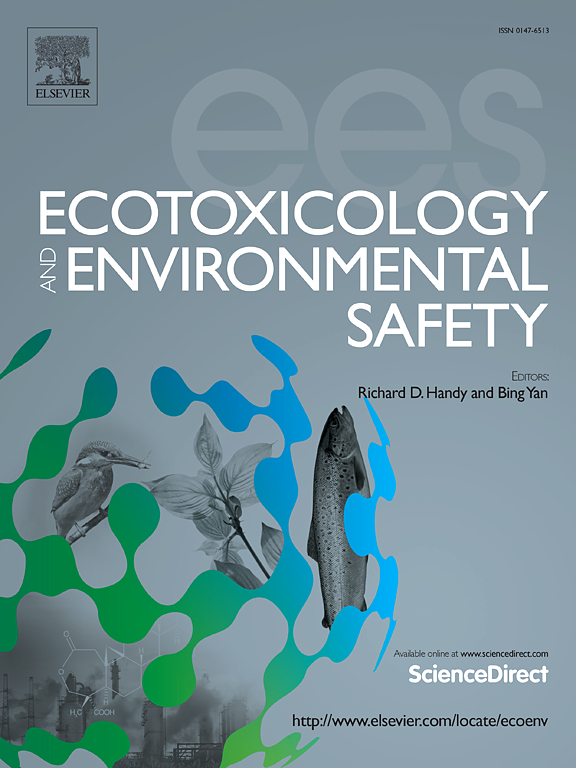Combined effect of heatwaves and residential greenness on the risk of stroke among Chinese adults: A national cohort study
IF 6.2
2区 环境科学与生态学
Q1 ENVIRONMENTAL SCIENCES
引用次数: 0
Abstract
Heatwaves have been associated with an increased risk of stroke, while residential greenness may offer protective benefits. This prospective cohort study examined 22,702 participants aged 35 years or older, with no prior history of cardiovascular disease (CVD), from the China Hypertension Survey (CHS) conducted between 2012 and 2015. Participants were followed up between 2018 and 2019. Heatwaves were defined as daily maximum temperatures exceeding the 92.5th percentile of the warm season for at least three consecutive days. Residential greenness was quantified using the Normalized Difference Vegetation Index (NDVI) within buffers of 300, 500, and 1000 m from participants' residences. Multivariable Cox proportional hazards models evaluated the independent and combined effects of heatwaves and greenness on stroke risk, while restricted cubic spline analyses explored nonlinear relationships. Interaction effects were assessed using both multiplicative and additive Cox regression models. During follow-up, 597 stroke events occurred. Each additional 3-day increase in heatwave days was associated with an increased stroke risk (HR: 1.19, 95 % CI: 1.08–1.31). Interaction analyses demonstrated a synergistic effect between heatwaves and lower residential greenness (NDVI300 m, NDVI500 m and NDVI1000 m) on stroke risk, with significant additive(RERI > 0, P < 0.05) and multiplicative interactions (HR > 1, P < 0.05). The strongest protective effects of greenness were observed within a 500 m buffer zone, particularly for individuals under 60 years, rural residents, and those with higher educational attainment. This study highlights the potential benefits of enhancing greenness for cardiovascular health and provides valuable insights for environmental governance and public health policy in China.
热浪和住宅绿化对中国成年人中风风险的综合影响:一项全国性队列研究
热浪与中风风险增加有关,而住宅绿化可能提供保护作用。这项前瞻性队列研究调查了2012年至2015年间进行的中国高血压调查(CHS)中年龄在35岁及以上、无心血管疾病(CVD)病史的22,702名参与者。参与者在2018年至2019年期间接受了随访。热浪被定义为每日最高气温至少连续三天超过温暖季节的92.5百分位数。使用归一化植被指数(NDVI)在距离参与者住所300、500和1000 m的缓冲区内量化住宅绿化。多变量Cox比例风险模型评估热浪和绿化对中风风险的独立和联合影响,而限制三次样条分析则探索非线性关系。使用乘法和加性Cox回归模型评估相互作用效应。在随访期间,发生了597例中风事件。热浪天数每增加3天与卒中风险增加相关(HR: 1.19, 95 % CI: 1.08-1.31)。相互作用分析表明,热浪和较低的住宅绿化(NDVI300 m, NDVI500 m和NDVI1000 m)对卒中风险具有协同效应,并具有显著的加性(rei >;0, P <; 0.05)和乘法相互作用(HR >;1, P & lt; 0.05)。在500 m的缓冲区内,绿化的保护作用最强,特别是对60岁以下的个体、农村居民和受教育程度较高的人。本研究强调了加强绿化对心血管健康的潜在益处,并为中国的环境治理和公共卫生政策提供了有价值的见解。
本文章由计算机程序翻译,如有差异,请以英文原文为准。
求助全文
约1分钟内获得全文
求助全文
来源期刊
CiteScore
12.10
自引率
5.90%
发文量
1234
审稿时长
88 days
期刊介绍:
Ecotoxicology and Environmental Safety is a multi-disciplinary journal that focuses on understanding the exposure and effects of environmental contamination on organisms including human health. The scope of the journal covers three main themes. The topics within these themes, indicated below, include (but are not limited to) the following: Ecotoxicology、Environmental Chemistry、Environmental Safety etc.

 求助内容:
求助内容: 应助结果提醒方式:
应助结果提醒方式:


